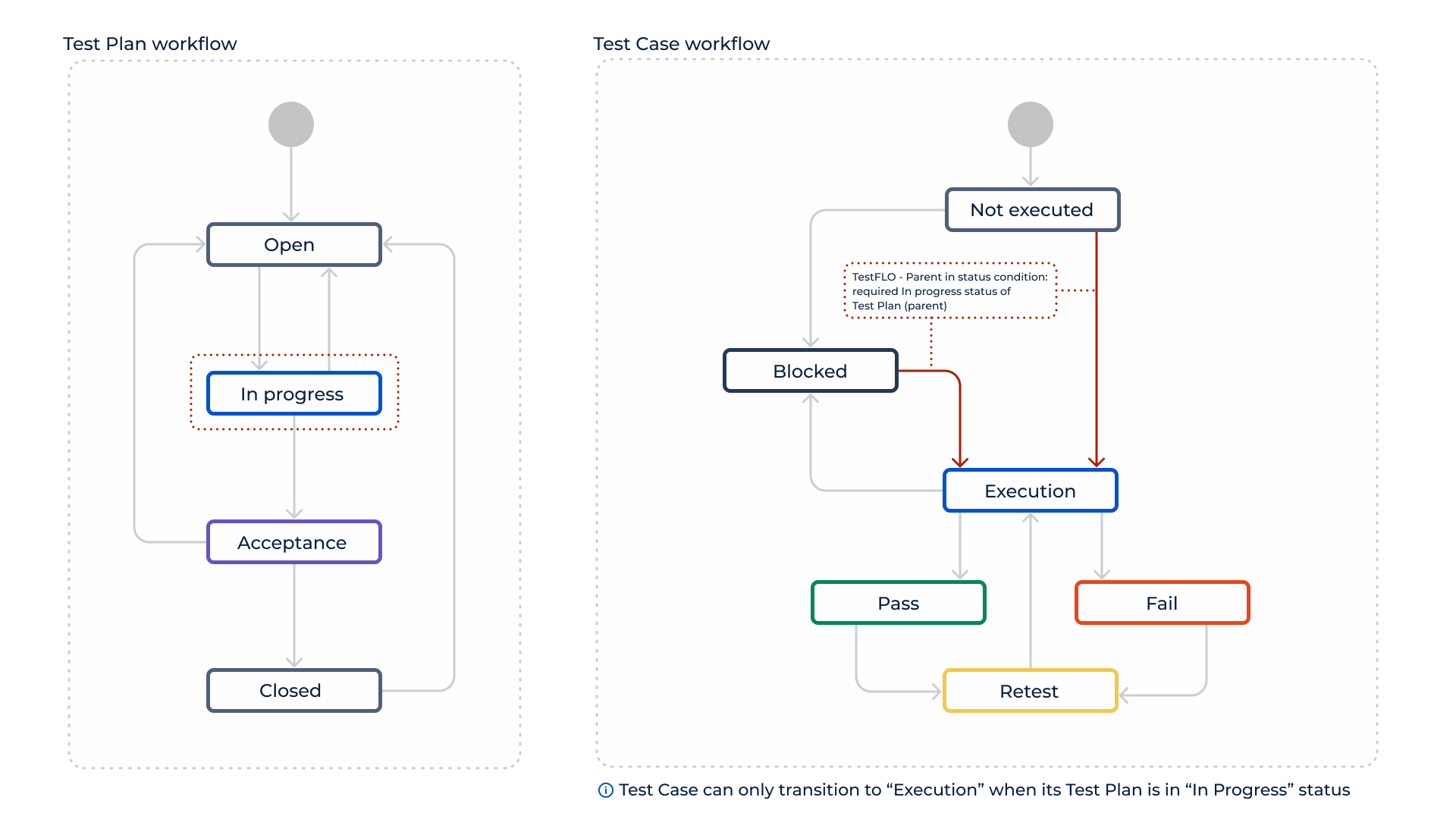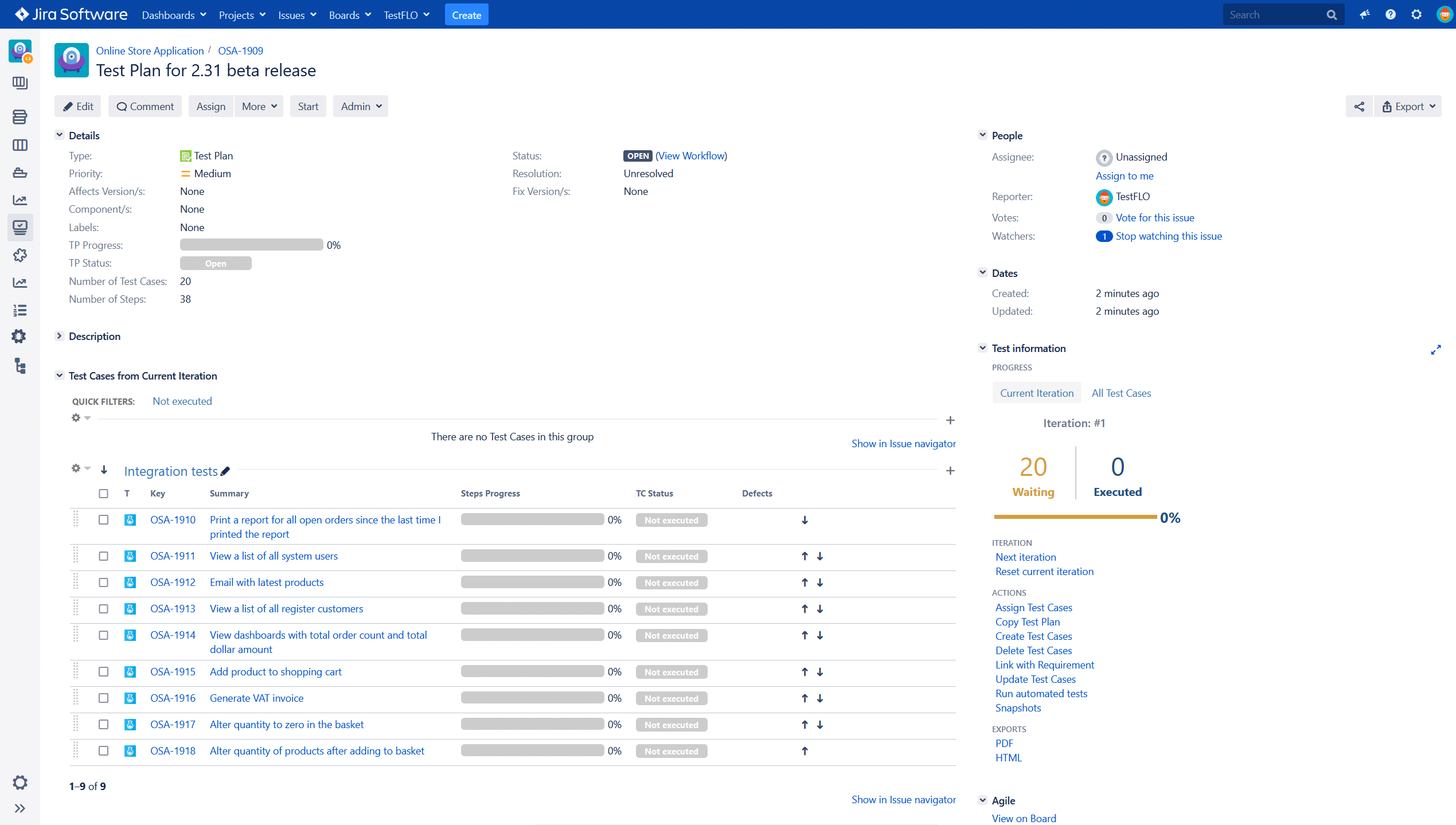How QA teams benefit from a centralized test repository

Jira isn’t a dedicated testing solution, but it is an integrated platform that allows managing projects, users, and workflows in a single place. Software teams that are used to Jira as their work environment will benefit from adding the function of test management. With QA teams in mind, we’ve created dedicated apps Requirements and Test Management for Jira and TestFLO for Jira. They make testers’ work much easier and improve the efficiency of the software development lifecycle. They offer the best integration with Jira when it comes to testing apps, enabling users to make the most of native Jira mechanisms.
Moreover, TestFLO for Jira is an incredibly flexible app that can be customized to serve different testing processes. We have recently helped a US-based corporation to implement TestFLO for Jira and streamline the testing process by introducing a centralized repository of testing documents. Read on to find out how our test management solution improved their underlying processes.
Biggest test management challenges
Tests and test management are an essential part of software development but unfortunately are often undervalued or even ignored altogether. The test management process brings a lot of challenges, as it’s divided into multiple steps covered by a multitude of tools. One of the most common problems of software teams is the lack of an integrated tool to track the whole development and testing process, which makes us scatter it all over the place. As a result, we write a Master Test Plan in Word, execute tests in one of many testing tools, handle Continuous Integration (CI) loop in either Bamboo, Jenkins, Bitbucket Pipelines, or another CI tool, duplicate and take care of defects in Jira, and write reports in Excel.
In this particular case, the organization is the leader of the American market in the area of building self-service kiosks, point-of-sale terminals, checking processing systems, barcode scanners, and business consumables. The company provides quality point of sale (POS) products and solutions, as well as IT maintenance support services, to help organizations better serve their customers and grow their businesses. The company’s solutions cover several core industries that include retail, financial service, hospitality, and travel. The vision of the company is to become the leading software and services-led enterprise in terms of hardware, software, and services provider in the industries they serve. That’s why the company needed a reliable test management tool that would help its development teams to deliver world-class quality software.
Before using TestFLO for Jira, they tracked all information related to tests using Excel spreadsheets that were posted to a shared network folder to grant access to all the team members. One of the primary challenges that came with this method was version control for test cases. With multiple team members editing such documents, the company was unable to track changes or the reasons behind them. Sometimes, the teams weren’t sure which version was the latest, since multiple users kept on updating the same documents simultaneously. The company needed a centralized repository of test documentation that would allow teams to track and review the changes.
Choosing the tool & solutions
To pick the best solution for their teams, the company used the Decision Analysis and Resolution (DAR), a CMMI-DEV evaluation process that analyzes possible decisions among the available tools. The solution evaluated different tools, including TestFLO for Jira, Xray for Jira, Hiptest, and Zephyr for Jira. They chose TestFLO for Jira because of its value, flexibility, and extensive customization options. As it was mentioned earlier, Jira alone isn’t a dedicated testing solution, but the team which already has been using Jira will truly benefit from transforming it into a test management tool with the help of additional, well-integrated apps. Thanks to this function, there was no need for creating new infrastructure, implementing a new tool, or even staff training. That’s why Jira was the best choice in this case, which occurred to be such a great environment for test management.
The company successfully uses TestFLO for Jira to maintain a test case repository and create test plans, which QA teams then export and share with specific customers. They use the tool together with their software testing process to track against defects, stories, requirements, and other things with the help of the TestFLO for Jira reporting features. They also use TestFLO‘s ability to export reports to PDF so that the client doesn’t require to have access to their Jira, and is still informed about how the tests were carried out.
Moreover, TestFLO for Jira has a workflow condition that prevents a Test Case from being executed before the Test Plan has been started. A workflow modification is enough to introduce this restriction, there are other workflow modifications that TestFLO for Jira allows for. Check them out in our documentation.
We know that working on Test Cases is dynamic. During the process, we have to deal with all kinds of situations when the details change or the bigger modifications are necessary. Sometimes after one meeting, the whole prioritization of the testing elements has to be re-arranged. Nevertheless, we all know that keeping everything in order is crucial, especially when the consecutiveness of Test Cases is significant, and completing one of them allows passing to the next. Whilst creating our test management tools we wanted to make the organizational issues the simplest and the most intuitive for the team members possible. This is why we’ve added functionality allowing us to order Test Cases in a Test Plan via drag and drop list. It saves a lot of time which can be effectively used on actual testing instead of planning.
The order of test cases is first determined at the test planning phase. We can do this at the tree level on the left, where we can order folders that contain test case templates, nest folders, and set the order of test cases within the file in the view on the right. It’s simple, just drag and drop:
Then, by clicking on a folder with a right mouse button, we can choose to create an executable test plan from that folder and all of its sub-folders That is how, from this part of the tree, we will create an executable test plan:
This results in a test plan that has executable test cases. Below we can see “Integration tests” that correspond to the “Integration tests” folder from the tree mentioned before:
At this level, we can still change the order of the test cases if we want it to be a little different than we specified earlier in the tree. A specific instance was created from the template in the tree, and we can still customize this instance. The change here doesn’t affect the whole tree, only this specific test plan. We can move the cases up and down by drag and drop or arrows on the right side. They can also be moved between groups, e.g. from “Integration tests” to “Critical functionalities”. Below we can see a down-scrolled view of the test plan:
We can also change the order of the whole group.
Moreover, version 8.6 allows the test leader to force testers to complete cases in the order defined in the test plan.
Results and benefits
Test management in Jira grants the requirement collection stage the importance it deserves. We need to think about gathering requirements in the same place as performing other testing activities, being able to keep testing, and execute the whole software development together in a consistent interface. All team members involved in the process, so analysts, product managers, testers, developers, customers, and the rest of the stakeholders have easy access to data and can monitor implemented changes. What’s more, a well-planned and organized process is more likely to achieve the final goals than a chaotic one, especially when it comes to more complex projects. Test management lets us structure everything from end to end. Executing each testing step in one place makes it easier to track the relations between the objects.
Making sure that everything is ordered helps prevent mistakes, minimize bugs and as a result, saves time and budget. This idea goes perfectly with the rules of static testing which consists of testing the app based on its code and specification before even launching the actual program. It may sound strange, but did you know that a bug can cost even up to 880 times less when it’s found during the starting phase of testing than if it’s discovered later in the process?
In this case, following the implementation of TestFLO for Jira, the company gained the possibility of tracking the changes that could be referenced if any issues were to come up during testing. Using comments, the teams can reference the changes and their origin, as well as attach supporting documentation. That has introduced a significant improvement to the company’s reviewing process. Since all the information is centralized, the process is streamlined and efficient. With the ability to assign test cases to individual members, team transparency has improved as well. The team members now know who is working on what and which documents are available without worrying about duplicating efforts.
Thanks to implementing TestFLO for Jira, QA teams can improve the transparency of tests, increase test coverage visibility, and boost traceability of tests and requirements. This solution also provides testers from different projects with an easily accessible place for storing all the information relevant to testing, which includes displaying the history of changes, linking test artifacts to development activities, and copying the Test Repository from one project to another.
Summary
Modern technologies are an inseparable element of digital transformation that can affect every aspect of work, in every department, in every enterprise. A properly selected digital tool that perfectly matches the real business needs of a specific team can automate processes and facilitate the completion of daily tasks. TestFLO for Jira is a tool that covers the entire test management process in Jira, and it adapts to the specific needs of QA teams. In this case, TestFLO for Jira helped the company to centralize test documentation and streamline the review process. That resulted in significant increases in staff productivity, and overall satisfaction with the process which is smooth and transparent.
If you’d like to go with TestFLO yourself, take a free 30-day trial from the Atlassian Marketplace. Also, read more about tools for effective test management:








